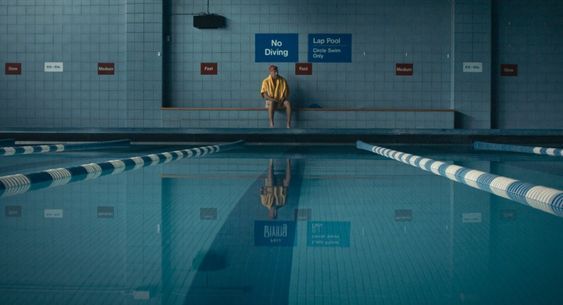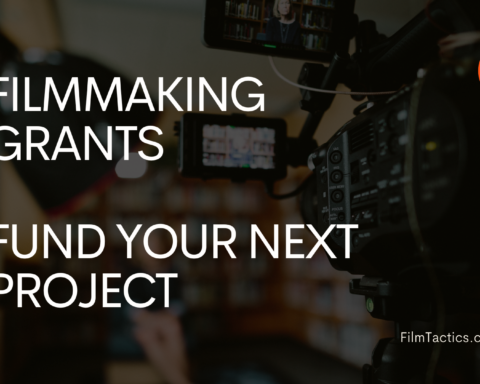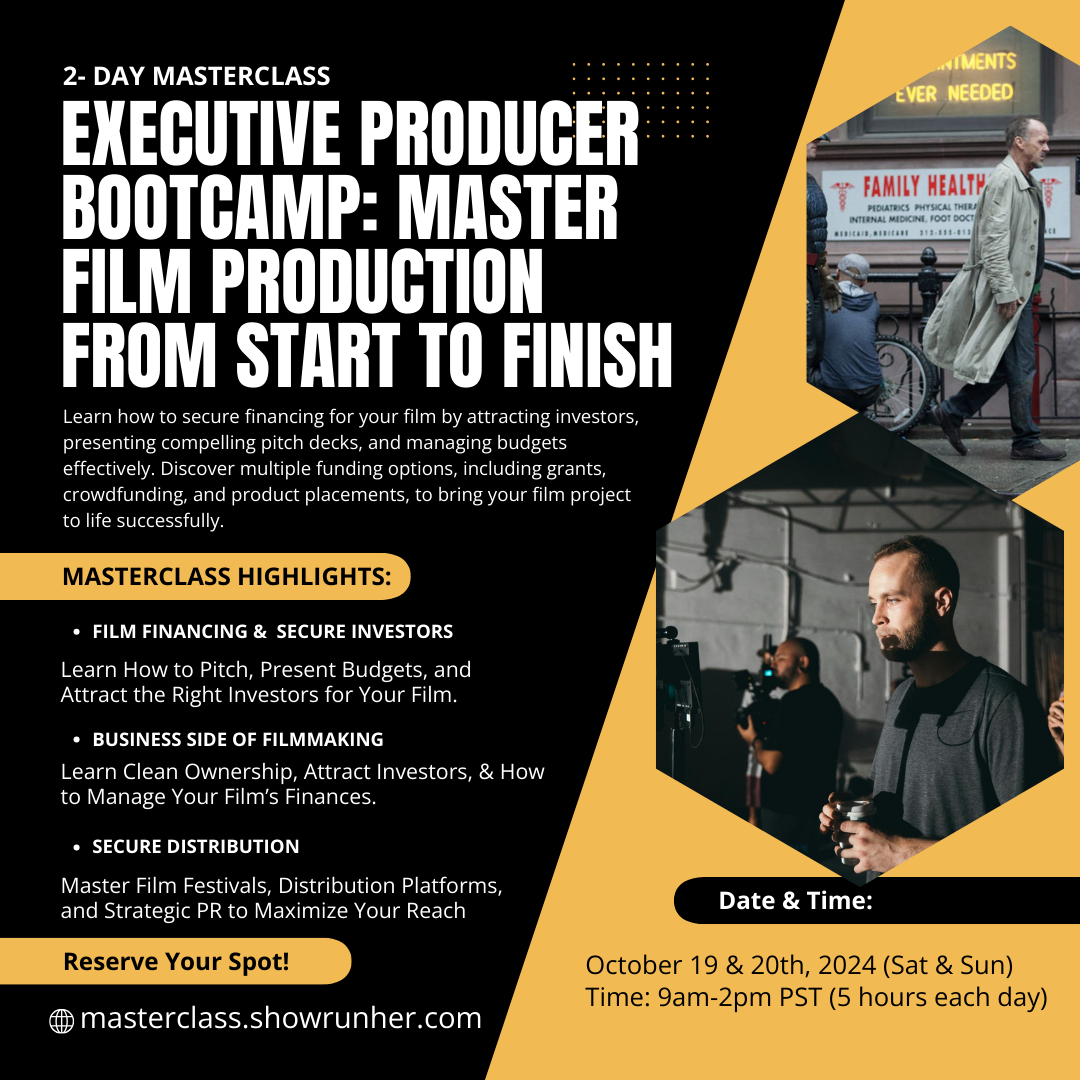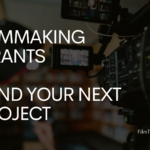- January: Concept Development & Initial Planning
- February: Scriptwriting & Budgeting
- March: Initial Crowdfunding & Script Finalization
- April: Team Building & Contracts
- May: Casting & Location Scouting
- June: Securing Funding & Pre-Production Prep
- July: Finalize Logistics & Pre-Production Prep
- August: Rehearsals & Final Preparations
- September: Principal Photography
- October: Post-Production Begins
- November: Final Post-Production & Marketing Prep
- December: Distribution & Festival Submissions
As we approach the new year, it’s the perfect time to set goals and dive into your next creative project. If you’ve been dreaming of making a short film, I’ve got great news: with a clear, month-by-month plan, you can have your film completed in just one year, longer version (Click here for the shorter version) Whether you’re a seasoned filmmaker or just starting, I’ve outlined basic steps to keep you on track each month. So, grab a notebook, save this blog, and get ready to bring your film to life in 2025!
Your Month-by-Month Film Plan
From concept development to distribution, every month comes with specific tasks that build on each other. Following these steps will help you stay organized, manage your budget, and, most importantly, keep moving forward. Here’s a quick overview:
- January: Concept development and story outline
- February: Scriptwriting and initial budgeting
- March: Crowdfunding setup and script finalization
- April: Building your crew and drafting contracts
- May: Casting and location scouting
- June: Securing funding and pre-production planning
- July: Finalizing logistics, permits, and insurance
- August: Rehearsals and final pre-production tasks
- September: Principal photography
- October: Begin post-production (editing, sound, color)
- November: Finalize post-production and marketing prep
- December: Distribution and film festival submissions
January: Concept Development & Initial Planning
- Tasks:
- Define Your Concept: Finalize the theme, genre, and core message of your film.
- Outline the Story: Develop a basic storyline and sketch out key scenes.
- Character Development: Create character profiles and define their motivations and arcs.
- Script Coverage: Seek initial feedback from peers or a mentor to refine your idea.
- Mood Board & Visual Style: Start a mood board to capture the tone, color palette, and style of the film.
- Budget Range:
- DIY/Indie: $0 – $200
- Low-Budget: $500 – $1,500 (for script consultants, concept artists, and mood board designers)
February: Scriptwriting & Budgeting
- Tasks:
- Write the Script: Draft a complete screenplay. Aim for a polished script by month’s end.
- Script Breakdown: Identify budget-impacting elements like locations, props, costumes, and special effects.
- Draft a Budget: Outline essential and optional expenses, keeping flexibility for unexpected costs.
- Vendor Research: Look into equipment rentals, props, and costumes to get a sense of pricing.
- Product Placement Ideas: Identify brands or products that could fit naturally into your film for potential partnerships.
- Budget Range:
- DIY/Indie: $0 – $500
- Low-Budget: $1,000 – $3,000 (for professional scriptwriting assistance and budget consulting)
March: Initial Crowdfunding & Script Finalization
- Tasks:
- Set Up Crowdfunding Campaign: Create accounts on platforms like Kickstarter or Indiegogo.
- Design Campaign Materials: Develop teaser graphics, videos, and concept art to build excitement.
- Plan Reward Tiers: Structure reward tiers for backers, balancing incentives with your budget.
- Script Polish: Incorporate feedback to finalize the script for production readiness.
- Location List & Permits Research: Identify potential locations and begin research on necessary permits.
- Budget Range:
- DIY/Indie: $0 – $1,000
- Low-Budget: $2,000 – $5,000 (for professional campaign video production and PR support)
April: Team Building & Contracts
- Tasks:
- Crew Recruitment: Post job listings and network to find your crew (DP, editor, sound designer, etc.).
- Conduct Interviews: Screen potential team members for skill and compatibility.
- Draft Contracts: Use templates or consult a lawyer to create crew contracts.
- Product Placement Outreach: Begin discussions with brands for potential placements.
- Location Shortlist: Refine your location options based on feasibility and accessibility.
- Budget Range:
- DIY/Indie: $500 – $1,500
- Low-Budget: $3,000 – $7,000 (for recruitment and legal fees for contract drafting)
May: Casting & Location Scouting
- Tasks:
- Host Casting Calls: Hold in-person or virtual auditions to find your ideal cast.
- Final Selections: Narrow down choices with callbacks and finalize the cast list.
- Location Scouting: Visit and evaluate potential locations for practical considerations.
- Permit Applications: Begin filling out necessary permit applications for chosen locations.
- Cast Contracts: Draft and sign agreements with selected actors.
- Budget Range:
- DIY/Indie: $500 – $2,000
- Low-Budget: $5,000 – $10,000 (for professional casting director and multiple location visits)
June: Securing Funding & Pre-Production Prep
- Tasks:
- Launch Crowdfunding Campaign: Promote the campaign across social media.
- Campaign Updates: Post regular updates, videos, and thank-you messages to engage backers.
- Finalize Product Placement Deals: Confirm partnerships and expectations.
- Insurance Quotes: Obtain quotes for essential insurance coverage like E&O and general liability.
- Cast Read-Through: Schedule a read-through to prepare actors and gather feedback.
- Budget Range:
- DIY/Indie: $500 – $3,000
- Low-Budget: $5,000 – $10,000 (for PR support and insurance quotes)
July: Finalize Logistics & Pre-Production Prep
- Tasks:
- Confirm Product Placements: Secure deals with partners and plan on-set logistics.
- Secure Permits & Insurance: Finalize all permits and purchase necessary insurance.
- Script Breakdown for Props & Costumes: Ensure you have all props, wardrobe, and set requirements listed.
- Finalize Shooting Schedule: Develop a detailed schedule with day-by-day tasks and crew call times.
- Location Contracts: Finalize agreements and logistics for your filming locations.
- Budget Range:
- DIY/Indie: $1,000 – $3,000
- Low-Budget: $7,000 – $15,000 (for insurance policies and permit fees)
August: Rehearsals & Final Preparations
- Tasks:
- Rehearsals with Cast: Focus on scenes requiring complex choreography or heavy dialogue.
- Set Preparations: Confirm any required location setups or adjustments.
- Confirm Equipment Rentals: Reserve cameras, lighting, sound, and other essential gear.
- Location Permits Check: Ensure all permits are valid for the production dates.
- On-Set Essentials Checklist: Prepare items like backup batteries, first aid kits, and catering arrangements.
- Budget Range:
- DIY/Indie: $500 – $2,000
- Low-Budget: $5,000 – $10,000 (for professional rehearsal spaces and equipment rentals)
September: Principal Photography
- Tasks:
- Follow the Shooting Schedule: Stick to the planned schedule to stay on track.
- Daily Reviews (Dailies): Review footage each day to check for quality and continuity.
- Backup Footage: Save footage on multiple devices to avoid data loss.
- Daily Debriefing: Communicate with cast and crew each day to address any issues.
- Track Reshoots: Note any additional shots needed as you go.
- Budget Range:
- DIY/Indie: $5,000 – $20,000
- Low-Budget: $15,000 – $50,000 (for full crew salaries, high-quality gear rentals, catering)
October: Post-Production Begins
- Tasks:
- Editing the Rough Cut: Begin editing the film’s main narrative structure.
- Sound Editing: Add ambient sounds, sound effects, and clean up dialogue.
- Color Grading: Work with a colorist to develop the film’s final look.
- Music Licensing or Composition: License music or collaborate with a composer.
- Test Screenings: Conduct small screenings for feedback on pacing and clarity.
- Budget Range:
- DIY/Indie: $1,000 – $5,000
- Low-Budget: $10,000 – $30,000 (for professional editing, sound design, and color grading)
November: Final Post-Production & Marketing Prep
- Tasks:
- Finalize the Film Cut: Complete sound, color, and visual edits.
- Design Marketing Materials: Create posters, social media graphics, and a trailer.
- Assemble Press Kit: Include bios, a synopsis, and high-quality stills for press use.
- Festival Research: Compile a list of film festivals for potential submissions.
- Distribution Strategy: Outline options for digital or limited release.
- Budget Range:
- DIY/Indie: $1,000 – $3,000
- Low-Budget: $5,000 – $20,000 (for PR agency and trailer production)
December: Distribution & Festival Submissions
- Tasks:
- Submit to Festivals: Target festivals aligned with your film’s genre and theme.
- Press Outreach: Reach out to bloggers, journalists, and reviewers.
- Organize Premiere Event: Plan a local or virtual premiere to debut the film.
- Set Up Digital Distribution: Explore streaming or digital options for online release.
- Reflect & Review: Collect feedback and evaluate the project’s success.
- Budget Range:
- DIY/Indie: $500 – $2,000
- Low-Budget: $5,000 – $15,000 (for festival fees, premiere event, and PR outreach)
Total Estimated Costs
- DIY/Indie Total: $10,500 – $42,200
- Low-Budget Total: $58,500 – $176,500
With this structure, you’ll stay on track and make steady progress toward completing your film by the end of the year. Now is the time to start planning, so you can hit the ground running in January.
Don’t Miss Out: Join My November 30th Webinar!
Planning your film is just the first step. What if you could make back your budget, or even turn a profit? If you’re interested in learning how to maximize your film’s revenue, be sure to check out my upcoming webinar on November 30th. We’ll cover proven strategies for indie filmmakers, from funding and distribution to finding profit opportunities.
I’d love to see you there, reserve your spot now to gain valuable insights and make the most of your film project!
Ready to make your short film a reality in 2025? Save this blog, sign up for the webinar, and let’s make it happen!









